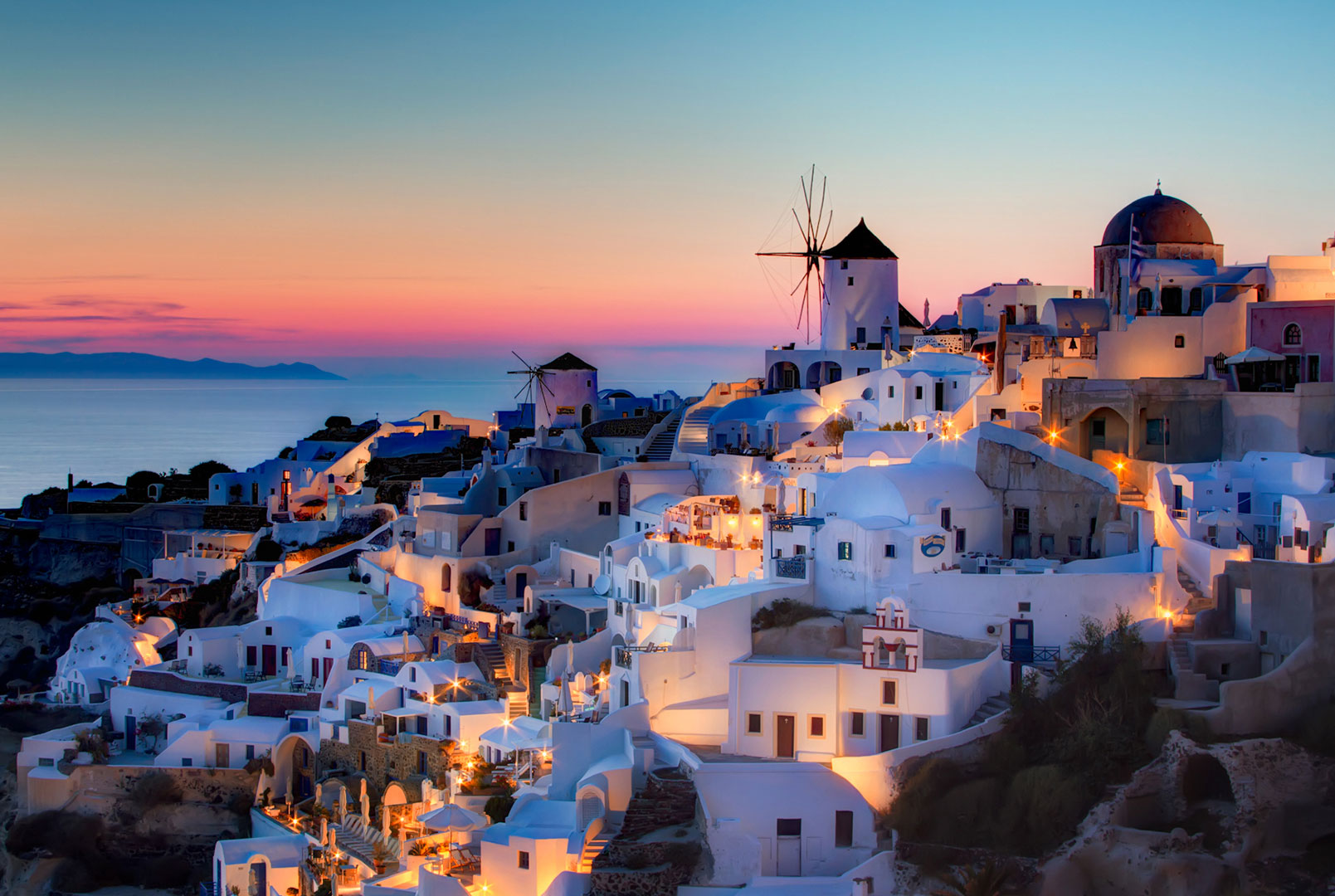
Destination Santorini
Santorini...The Big C
When you think of Greece it's likely your mind jumps straight to Santorini...
Fira
The capital of Santorini, Fira is located on the west side of the island and it is built on top of cliffs, 250 meters from the sea, giving you the most amazing feeling that you are at the top of the world! In the end of the 18th century, the residents of Santorini had to leave the old capital of the island Pyrgos, and Fira became their new capital. Of course the earthquake in 1956 totally destroyed a part of the town and only a small part of the 18th century buildings survived the earthquake forming the today's island's shape that has stolen every traveler's heart.
Imerovigli
Imerovigli has views of the volcano, breathtaking sunsets and tranquility. There is a main square which leads up to the Caldera and the traditional hillside cave settlements. If you continue on the road to Oia, the lower plains of Imerovigli also have wonderful sunset east coast views.
The largest part of Imerovigli was destroyed in the 1956 volcano eruption. Some of the population perished, while others moved away to the mainland. Imerovigli has since then been restored and is home to some of the most beautiful hotels and traditional cave house settlements on the island.
Oia
Imerovigli has views of the volcano, breathtaking sunsets and tranquility. There is a main square which leads up to the Caldera and the traditional hillside cave settlements. If you continue on the road to Oia, the lower plains of Imerovigli also have wonderful sunset east coast views.
The largest part of Imerovigli was destroyed in the 1956 volcano eruption. Some of the population perished, while others moved away to the mainland. Imerovigli has since then been restored and is home to some of the most beautiful hotels and traditional cave house settlements on the island.
Ancient Thera
Ancient Thera is an antique city on a ridge of the steep, 360 m high Messavouno mountain on the Greek island of Santorini. It was named after the mythical ruler of the island, Theras, and was inhabited from the 9th century BCE until 726 CE. Starting in 1895 the city was systematically investigated by Friedrich Hiller von Gaertringen, who excavated there until 1904. Later excavations by N. Zapheiropoulos between 1961 and 1982 under the auspices of the Archaeological Society of Athens unearthed the city's necropolis in Sellada. Findings from these excavations are on exhibit at the archaeological museum in Fira. Excavation work was again taken up between 1990 and 1994 under the leadership of Wolfram Hoepfner of the Free University of Berlin and resulted in a more precise understanding of the history of the southern Aegean.
Volcano
Imerovigli has views of the volcano, breathtaking sunsets and tranquility. There is a main square which leads up to the Caldera and the traditional hillside cave settlements. If you continue on the road to Oia, the lower plains of Imerovigli also have wonderful sunset east coast views.
The largest part of Imerovigli was destroyed in the 1956 volcano eruption. Some of the population perished, while others moved away to the mainland. Imerovigli has since then been restored and is home to some of the most beautiful hotels and traditional cave house settlements on the island.
Wine
Santorini is a Greek wine region located on the archipelago of Santorini in the southern Cyclades islands of Greece. Wine has been produced there since ancient times, but it was during the Middle Ages that the wine of Santorini became famous worldwide under the influence of the Republic of Venice. The Italian influence is still present in modern Santorini winemaking: the most famous Tuscan sweet wine is called Vin Santo. Santorini's Vin Santo (labeled "Vinsanto" to differentiate it from the Tuscan wine) is made in a passito style from grapes dried in the sun after harvest. Santorini also produces blended and rosé wine made from white grapes such as Athiri, Aidini and Assyrtiko, and red grapes such as Mandelaria.






